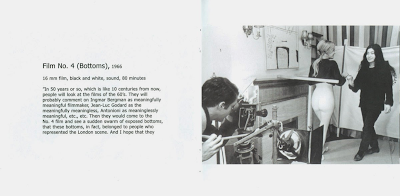Liquid Liquid
Optimo
San Francisco, USA: Superior Viaduct, 2015
12” EP, 45 rpm
Edition size unknown
The third and final EP by Liquid Liquid with Richard McGuire was released in 1983, by the label 99 Records, whose small but mighty roster of artists included Glenn Branca, Bush Tetras, ESG, Congo, and Vivien Goldman (though they famously passed on signing Sonic Youth).
Despite selling upwards of 30,000 copies when it was released, Optima was fetching as much as three hundred dollars on Discogs, so this 2015 reissue by Superior Viaduct1 was warmly received by record collectors, and soon became out-of-print itself.
The dance-punk classic features only four songs, with one of them being the band’s most widely recognized song, or at least most widely recognized bass line.
Grandmaster Melle Mel used Richard McGuire’s infectious bass part from Liquid Liquid's “Cavern” to drive his anti-drug anthem "White Lines (Don't Do It)”. The song was released a few months after “Cavern”, and quickly overshadowed it.
I always assumed it was a sample, but the Sugarhill Records house band performed a cover of the Liquid Liquid track, which formed the basis of “White Lines”.
Bass Player Doug Wimbish told Bass Guitar Magazine in 2009 that “A lot of Sugar Hill records that we recorded were clichéd riffs that DJs would spin in the club. We would record those riffs, and that particular song, the main part was by a band called Liquid Liquid.”
Stylus Magazine ranked "Cavern" #49 on its list of the "Top Basslines of All Time”. Guitar World ranked it at #32.2
99 Records sued Sugar Hill for copyright infringement - not just the recognizable bass line, but other rhythmic and melodic elements were used. Even some vocal phrasing and lyrics from “Cavern” appeared in “White Lines”.
McGuire recalls label founder Ed Bahlman being asked by Sugar Hill to “take a ride” to sort out the publishing dispute. Bahlman reportedly feared for his life, and - after being told “We know where you live” - moved back home with his parents. Some of the (possibly apocryphal and certainly impossible to corroborate) scare tactic stories involve bricks through the company’s store windows and customers frightened by machete-wielding lunatics.
Sugar Hill was ordered to pay $660,000 but instead declared bankruptcy. Bahlman shut down 99 Records, because of the case's legal costs, which apparently were around $60,000 (or $181,787.87 accounting for inflation).
McGuire left the band to pursue his burgeoning visual arts career.
In addition to performing the class bass line, he also designed the cover artwork for Optima (as he had for the previous EPs). He hoped to capture the songs' rhythms, which he described as "like standing in the middle of four tornados all swirling around”. The band’s name is spelled out in stacked letters, beside the doubled word on a vertical baseline. McGuire wanted it to be readable in two directions so "that you had to move it to read it."
In 2017, Pitchfork awarded the EP (which clocks in at under fourteen minutes) a rare 10/10 score. The other two records that preceded it were rated 9.1 and 9.2
1. The Superior Viaduct label has reissued classic rarities from many artists and musicians relevant here, including: Suicide, David Cunningham, Gavin Bryars, William S Burroughs, Tony Conrad, Pascal Comelade, The Residents, Sun Ra, Steve Reich’s Four Organs, Jean Dubuffet, Laraaji, and Fluxus artists Yoshi Wada, Henry Flynt, Takehisa Kosugi, La Monte Young and Marian Zazeela.
2. It’s rare a song would be recognizable to the average music listener by a bar or two of its bass part. Only a few immediately come to mind: "Walk on the Wild Side" by Lou Reed, "Cannonball "by the Breeders, "Come Together" by the Beatles, "Stand by Me" by Ben E. King, and "Under Pressure" by David Bowie and Queen (another bass hook made more famous through Hip-Hop appropriation).
"The big beat becomes itself on their third EP, Optimo, recorded at Radio City Music Hall Studios. (This was not as spacious as the name suggests.) Of the four immaculate songs, one secured Liquid Liquid a permanent place in the pop songbook. “Cavern” is rooted to McGuire toggling between the notes A and C on his bass, playing the kind of hitched, self-fading line that no trained player would ever be able to write. It is as much the sound of being unable to play as it is some kind of clever phrasing. It is beyond clever when paired with the drumming, percussion, and vocals. “Cavern” is always there, already rotating and coming at you from behind the sun and under the earth."
- Sasha Frere-Jones, Pitchfork

























































